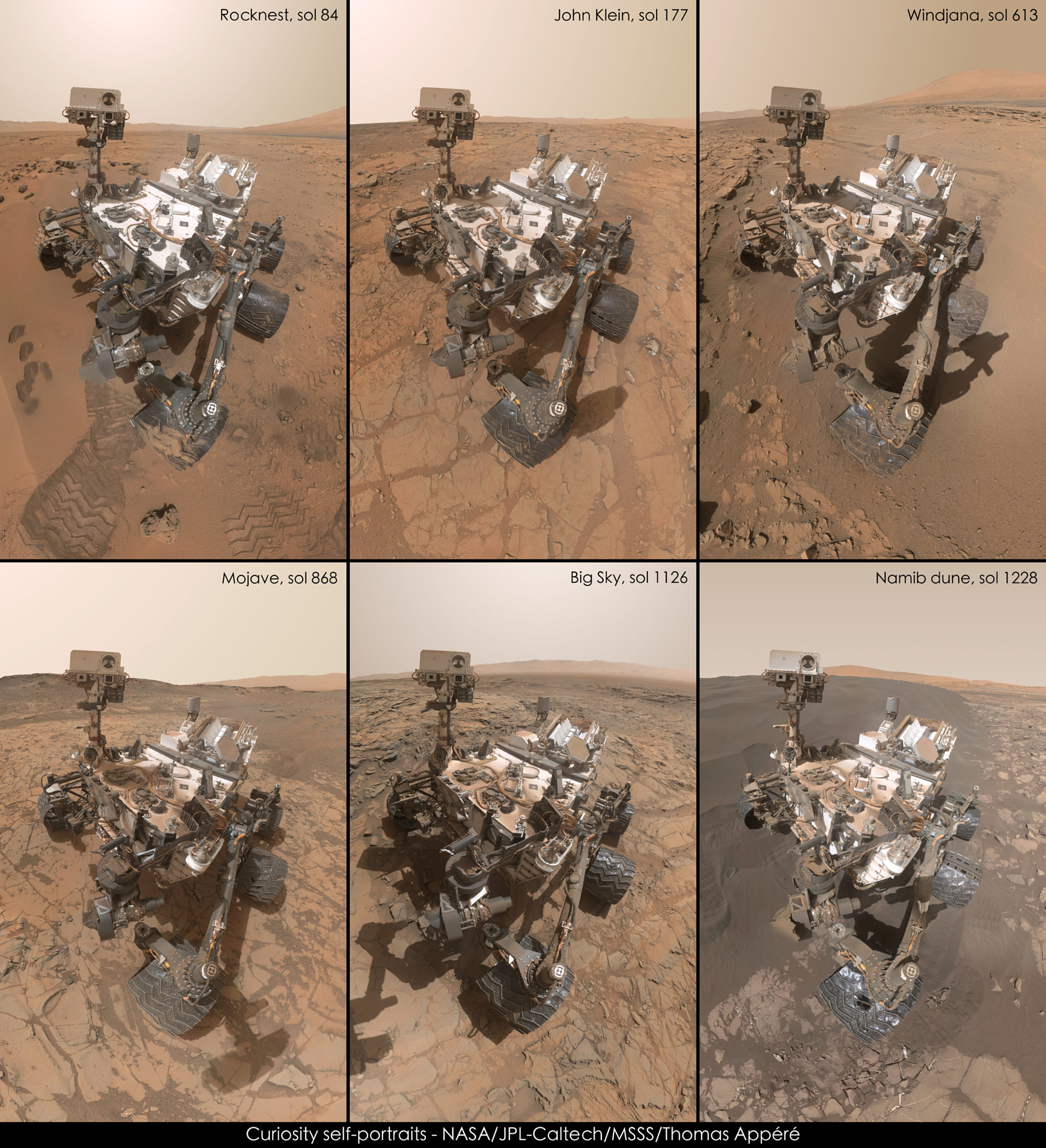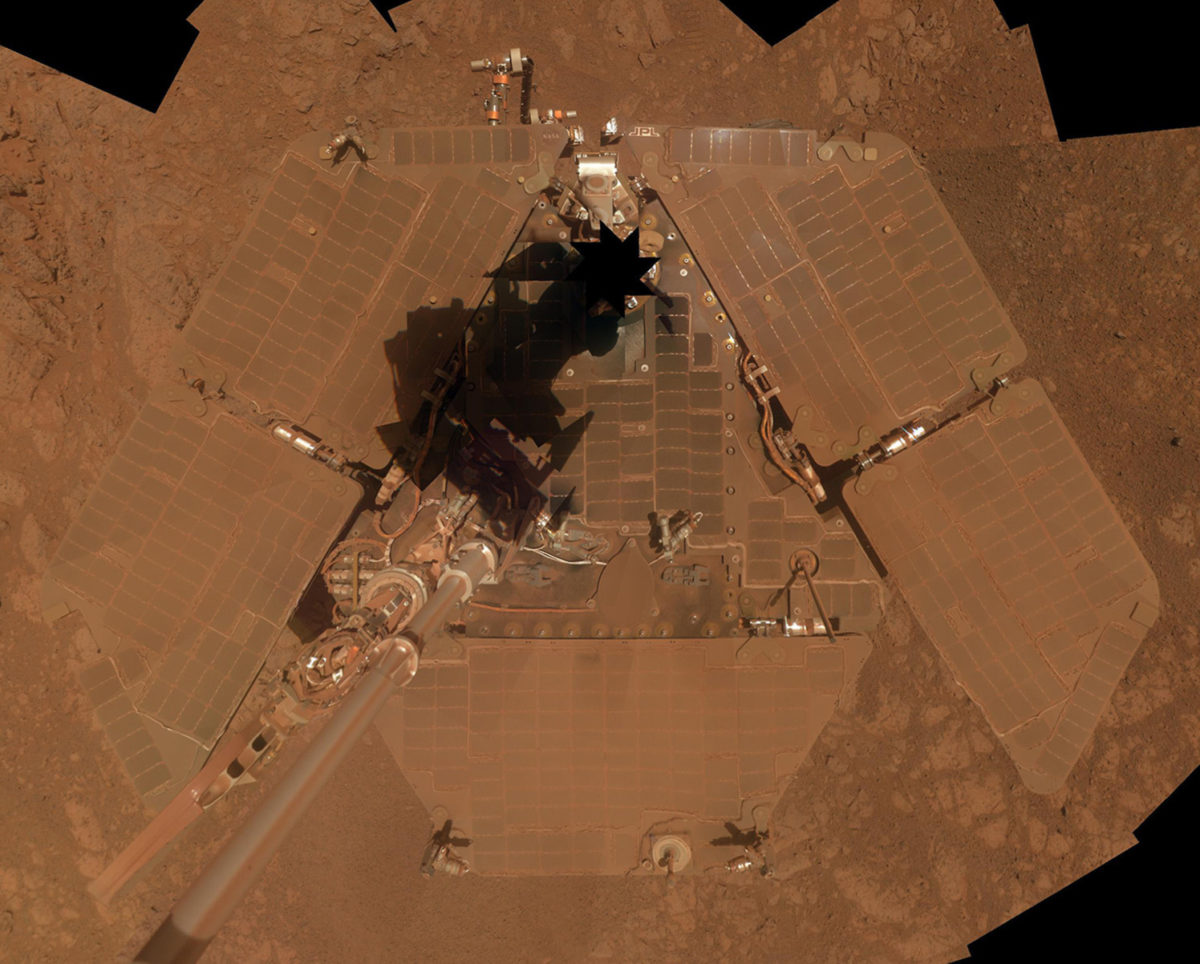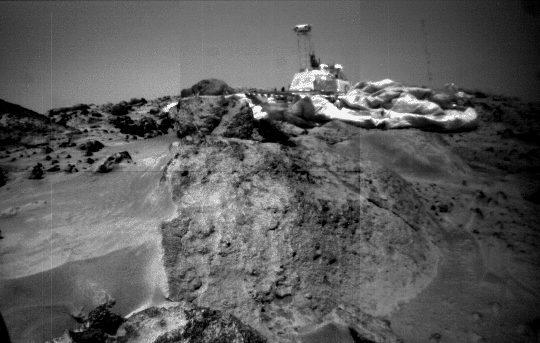Emily Lakdawalla • Jun 21, 2016
National Selfie Day: Spacecraft self-portraits
It's apparently National Selfie Day. I'm not entirely sure who has the authority to declare these things, or why they decided we needed a National Selfie Day, but since the self-portrait is one of my favorite subgenres of spacecraft photography, I couldn't resist writing about them.
The unequivocal master of self-portraits is Curiosity, an often-anthropomorphized robot that can even take its selfies the way humans do, by regarding itself with a camera held at the end of its own arm. Curiosity takes self-portraits relatively frequently, nearly every time it drills or scoops samples from Mars to deliver to its scientific instruments. Here are six such self-portraits:
But Curiosity wasn't the first Mars robot to do this. The Mars Exploration Rovers also occasionally performed "deck panorama" images to check out the amount of dust covering their solar panels. Here's a comparison of two such Opportunity panoramas, before and after a dust-cleaning event when a gust of wind puffed the panels clean:
And here's poor Spirit. I still get a lump in my throat whenever I see images of Spirit at Home Plate.

Like Curiosity, Spirit and Opportunity both had cameras on the ends of their robotic arms, but those cameras were very nearsighted; any attempt at self-portrait would be blurry. Spirit did attempt to use the arm to take a look at its own underbelly when it got stuck at Troy, but the view was blurry enough to be of limited use.
There's one more Mars craft that used an arm-mounted camera to take a photo of itself, generating one of my favorite pairs of images:


Actually, just about every lander mission takes photos with some amount of hardware in the view. Phoenix, Pathfinder, and Viking on Mars; the Surveyors and other lunar landers; even Philae got a few bits of its own hardware in view after landing on comet Churyumov-Gerasimenko. For these and other self-portraits, check out my collection of pictures of spacecraft in space.
Moving beyond landers, orbiters and deep-space craft don't have arm-mounted cameras, so they have a hard time getting enough perspective to shoot self-portraits. Here are a few examples. The first is a unique view of the instrument deck of Mars Reconnaissance Orbiter, taken using an instrument not ordinarily considered a camera, the Mars Climate Sounder instrument.

Here are a couple from the Chang'e 2 lunar orbiter, taken in 2010 using cameras to monitor solar panel deployments and rocket firings.
Chang'E 2 first orbit trim maneuver On October 8, 2010, Chang'E 2 fires its main engine to reduce the size of its lunar orbit, as the Moon swings through the field of view in the background. The firing of the engine begins just after the terminator passes out of view (from the camera's point of view). As the spacecraft drops completely into the lunar shadow, the camera's automatic exposure setting adjusts brighter, making part of the spacecraft visible in light emitted from the glowing thruster.Video: Credit: CNSA / tv.people.com.cn
Chang'e 2 deploys its solar panels (video) On October 1, 2010, shortly after launch, Chang'E 2 deploys its solar panels, an event witnessed by an engineering camera. In this video, a computer simulation shows the event and the position of the camera; then the video from the onboard camera is shown. The spring-deployed panels sway back and forth gently after deployment. After the swaying has damped, the spacecraft rolls and suddenly the brilliant ball of Earth swings into view. The camera's exposure adjusts for the brightness of Earth's clouds.Video: Credit: CNSA / tv.people.com.cn
Our own Lightsail had a camera to check out the sail deployment:
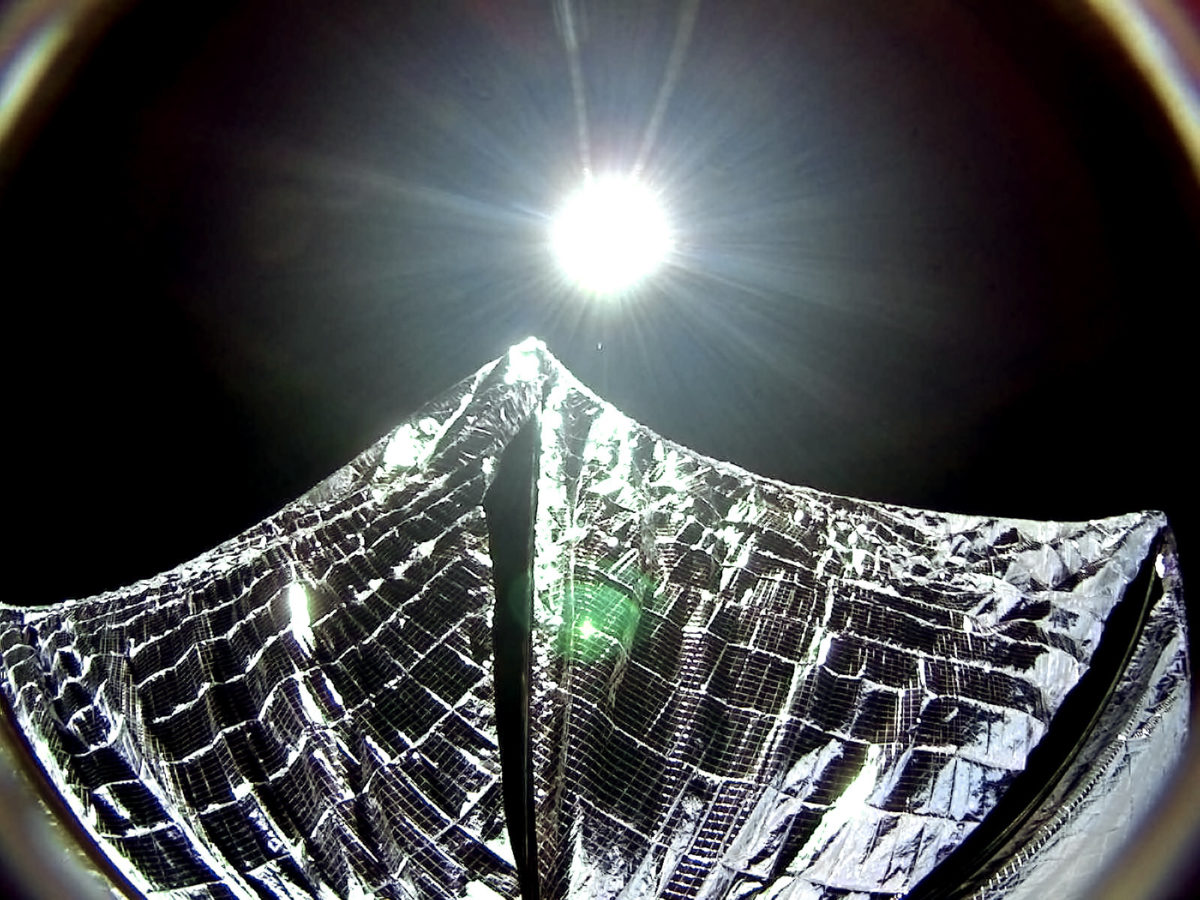
And so did JAXA's solar sail, IKAROS.
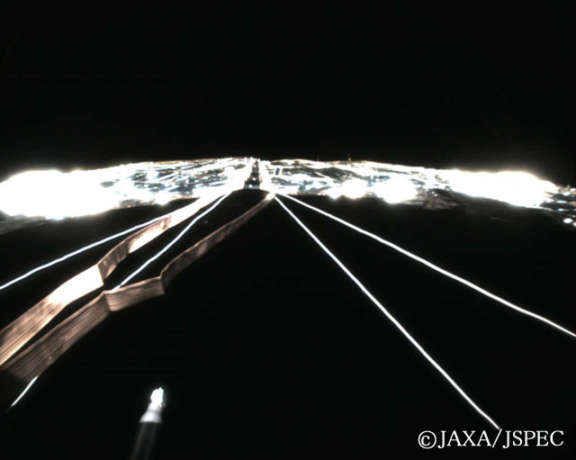
I particularly love this IKAROS self-portrait with Venus in the background.

Lots and lots of Earth-orbiting spacecraft have deployment-monitoring cameras; I could fill a whole gallery just with those. But let's stick with deep-space missions for the purposes of this post.
The list above has been confined to true self-portraits -- images taken of spacecraft by themselves. It would become a much longer list if I added in photos of spacecraft taken by other spacecraft. But just for fun, let's loosen the "self-portrait" definition just slightly to allow photos of spacecraft taken by other spacecraft that launched at the same time. If I do that, I get to add in a few more iconic portraits. First is this terrific view of Rosetta, often called a Rosetta self-portrait, but actually a photo of Rosetta taken by Philae:
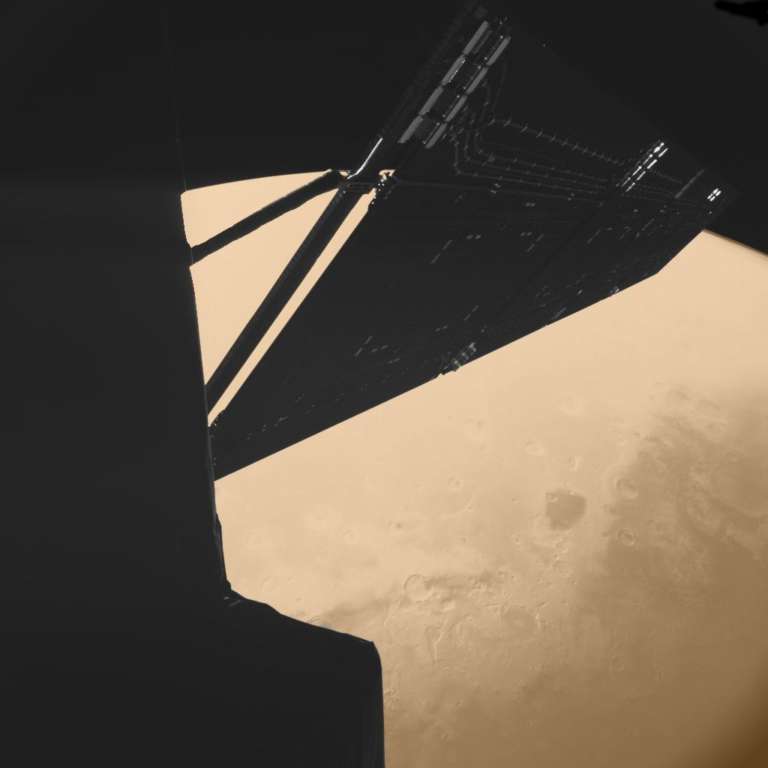
Later on, of course, the two spacecraft photographed each other as they parted:

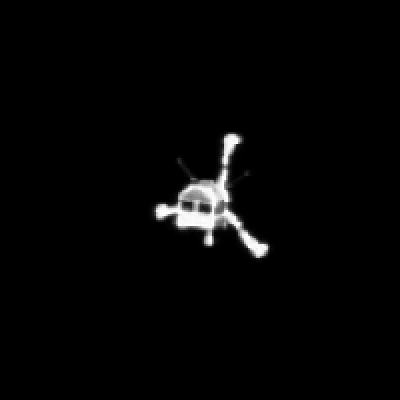
IKAROS carried deployable cameras, DCAM1 and DCAM2, whose sole purpose was to capture a clear view of the deployed solar sail in space. IKAROS released them, they took their photos, and then they drifted away forever:
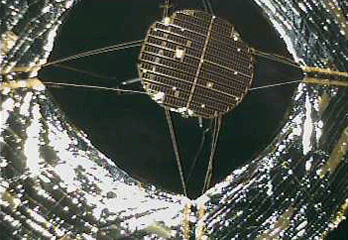
Here's a poignant entry in the list of spacecraft photographing deployed sub-spacecraft -- Hayabusa's last view of the Minerva hopper, which missed landing on asteroid Itokawa.

And while we're talking about lost deployed spacecraft, here's Beagle 2.

But that's a little depressing, so let's close this post out with a few more fun views. Anytime you put a rover on a lander, the two can image each other, repeatedly. Recently, the Chang'e 3 lander and rover imaged each other:


But my favorite of this type has to be all the times Pathfinder imaged Sojourner, and vice versa:

In fact, there's a whole wonderful gallery of photos of Pathfinder from Sojourner's dog's-eye view.
Have I missed any great spacecraft self-portraits, especially the true it-took-a-photo-of-itself type? Let me know in the comments! Or go on to enjoy the rest of my collection of pictures of spacecraft in space.
Support our core enterprises
Your support powers our mission to explore worlds, find life, and defend Earth. You make all the difference when you make a gift. Give today!
Donate

 Explore Worlds
Explore Worlds Find Life
Find Life Defend Earth
Defend Earth


